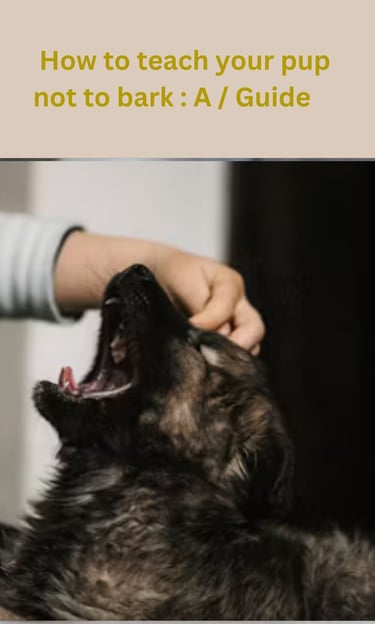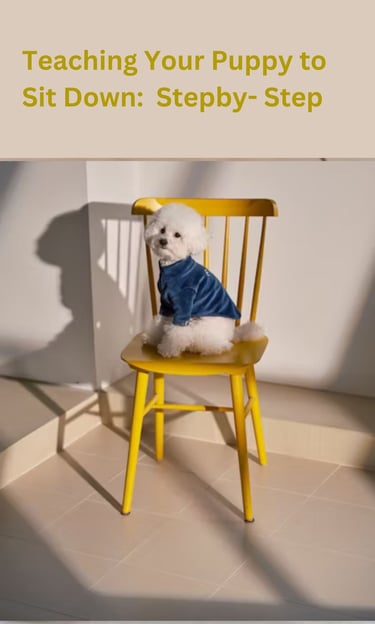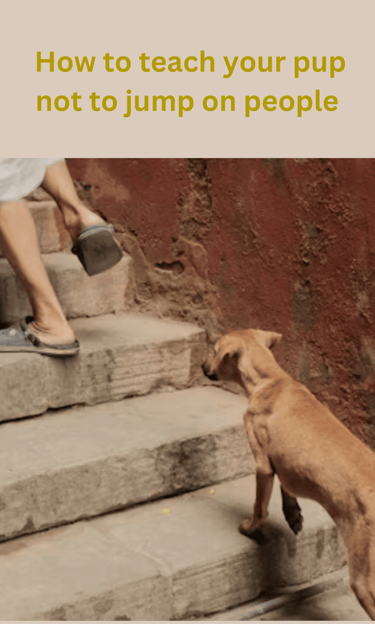Training Your Puppy at Home: A Step-by-Step Guide
Training your puppy effectively starts with a thorough understanding of their behavior and temperament. Canine psychology plays a crucial role in interpreting your puppy's actions and signals.
Understanding Your Puppy’s Behavior
Training your puppy effectively starts with a thorough understanding of their behavior and temperament. Canine psychology plays a crucial role in interpreting your puppy's actions and signals. Puppies are naturally curious beings, learning about their environment through exploration and play.
This exploration often comes with behaviors such as chewing, digging, or barking, which are normal but can be redirected through appropriate training methods. Recognizing these behaviors enables you to respond effectively and establish a strong foundation for training.
One of the key aspects of understanding puppy behavior is recognizing their communication signals. Dogs communicate primarily through body language, and understanding these signals can enhance the training process.
For instance, a wagging tail usually indicates excitement or happiness, while a tucked tail may signal fear or submission. Learning to read these cues allows you to create a more tailored training approach that respects your puppy's comfort level and emotional state.
Moreover, socialization is critical in shaping your puppy's behavior. Early exposure to different environments, people, and other animals helps them develop confidence and prevents fearful or aggressive tendencies later in life.
Positive interactions are essential during this phase, as they set the tone for how your puppy will respond to new experiences in the future. Socialization doesn't stop after the initial training period; maintaining ongoing exposure helps reinforce positive behavior and adaptability.
Creating a positive training environment is vital for your puppy's receptivity and motivation to learn. This means utilizing patience and consistency, as puppies often require time to grasp new commands and behaviors.
By being attuned to their individual needs and temperament, you can facilitate a more effective training experience that fosters a lifetime bond built on trust and understanding. Ultimately, incorporating these elements will lead to a well-adjusted, obedient puppy.
Essential Training Commands Every Puppy Should Learn
Training your puppy at home involves teaching essential commands that lay the foundation for a well-behaved companion.
The most fundamental commands include "sit," "stay," "come," and "leave it." These commands not only facilitate communication between you and your puppy but also ensure their safety and the safety of others.
To successfully teach these commands, it is vital to incorporate positive reinforcement techniques, such as rewards or praise, to motivate your puppy.
To begin with, teaching "sit" is a straightforward process. First, hold a treat close to your puppy’s nose. As their nose follows the treat upwards, their bottom will instinctively lower. Once they are in the seated position, say "sit," and provide the treat along with verbal praise.
Repeat this process several times within a short training session to reinforce the behavior. Consistency is crucial; therefore, practice this command before meals or playtime to keep your puppy engaged.
The next command, "stay," can be a bit more challenging, as it requires your puppy to remain in a stationary position.
Start by commanding your puppy to "sit." Once they are in position, hold your hand up, palm facing them, and clearly say "stay." Take a few steps backward.
If your puppy remains in place, return to them and offer a treat. Should they get up, gently guide them back and repeat the process. Keep your training sessions brief and rewarding to maintain your puppy's attention.
The "come" command is essential for safety. To teach this, start from a distance, call your puppy by name followed by “come.” When they approach you, shower them with praise and a treat. For the command "leave it," use a treat as bait and place it on the ground.
When your puppy reaches for it, calmly say "leave it" and cover the treat with your hand. Once they back away, reward them to reinforce the desired behavior.
Through consistent, enjoyable training, your puppy will learn these commands effectively, strengthening your bond and establishing a foundation for further training.
Creating a Structured Training Routine
Establishing a consistent training routine is fundamental to effectively training your puppy at home. A well-structured schedule not only aids in learning but also strengthens the bond between the puppy and the owner.
To begin, it is essential to choose the optimal time for training sessions. Puppies typically possess the most focus and energy after a nap or playtime, making these moments ideal for training. Sessions should be short, lasting about 5 to 10 minutes, to maintain the puppy's attention and prevent fatigue.
Incorporating training into everyday activities can significantly enhance the learning experience. Simple commands, such as "sit," "stay," or "come," can be practiced during walks, mealtimes, or play sessions.
This seamless integration allows for real-world application of learned behaviors and helps puppies understand their roles within the home.
For instance, using the command "sit" before feeding can teach patience and discipline, reinforcing good manners while establishing a routine. Consistency in command usage across different contexts further enhances learning retention.
Setting achievable goals is another essential component of creating a structured training routine. Begin with basic commands, gradually increasing the complexity as the puppy masters previous skills.
This progressive approach helps prevent overwhelming the puppy and encourages steady growth in their abilities. Additionally, regular practice is vital for progress. Aim to incorporate short training sessions into your daily schedule, ensuring that the puppy receives ample opportunities to learn and practice.
Ultimately, consistency, integration, and achievable objectives play crucial roles in establishing a structured training routine.
By thoughtfully implementing these elements, you create a conducive learning environment that fosters both development and a strong relationship between you and your puppy.
Common Challenges and How to Overcome Them
Training a puppy can often present various challenges that, while common, may seem daunting to new owners. One major hurdle many encounter is the presence of distractions during training sessions. Puppies are naturally curious and easily distracted by their environment.
To combat this challenge, it is advisable to choose a quiet, controlled space for training sessions. Gradually introducing distractions in a controlled manner can help teach the puppy to focus, allowing for more successful training outcomes.
Another challenge that can arise is fearfulness in puppies. Factors such as new environments, loud noises, or unfamiliar people can contribute to anxiety. It is crucial to tackle this issue patiently; gradual exposure to new stimuli while creating positive associations can help alleviate fear.
Rewarding your puppy for calm behavior with treats or praise can reinforce their confidence and encourage a sense of security at home.
Housebreaking is often cited as one of the most frustrating obstacles for new puppy owners. Accidents are bound to happen, but implementing a consistent routine can drastically improve success rates.
Establish specific potty times and take the puppy outside to the same spot, reinforcing the behavior with praise when they relieve themselves outdoors. Keeping a close eye on your puppy and recognizing signs that they need to go can help prevent indoor accidents.
Ultimately, the keys to overcoming these challenges include patience and perseverance. Every puppy is unique, and owners should be adaptable to their individual responses. Regular positive reinforcement and consistent training can foster a successful, harmonious relationship between you and your puppy. Success in training not only enhances the learning experience but also contributes positively to your puppy's overall well-being.











